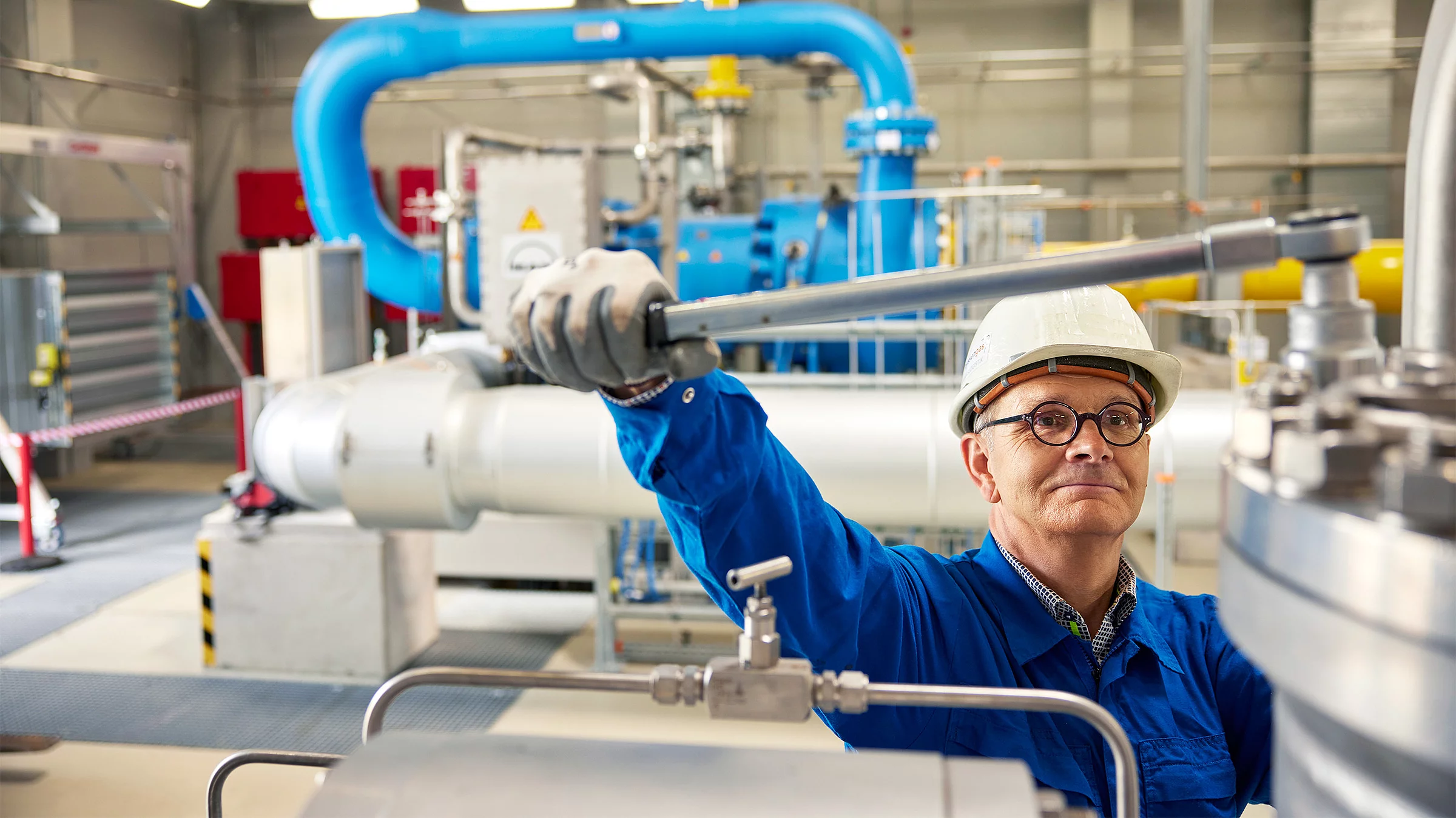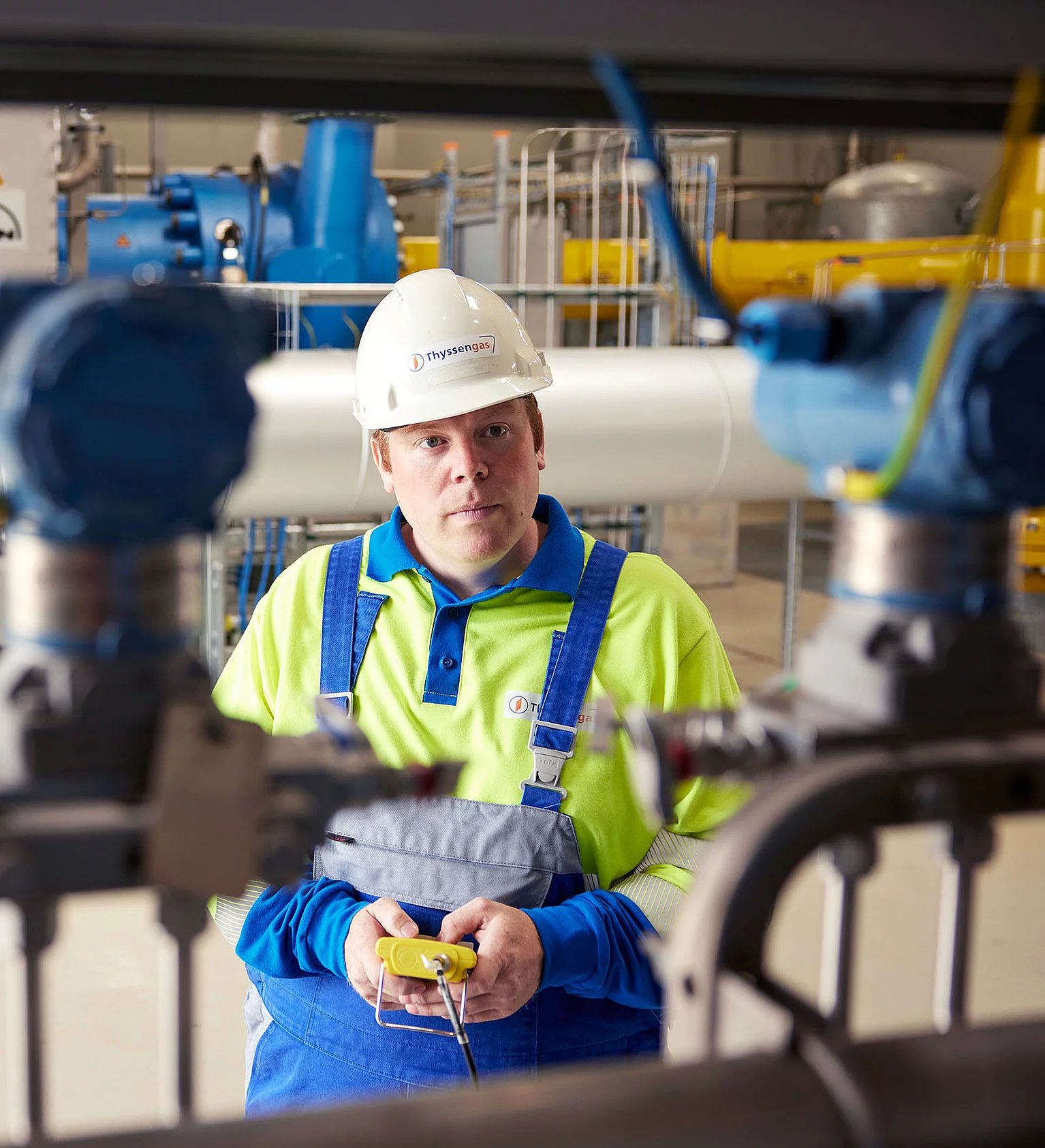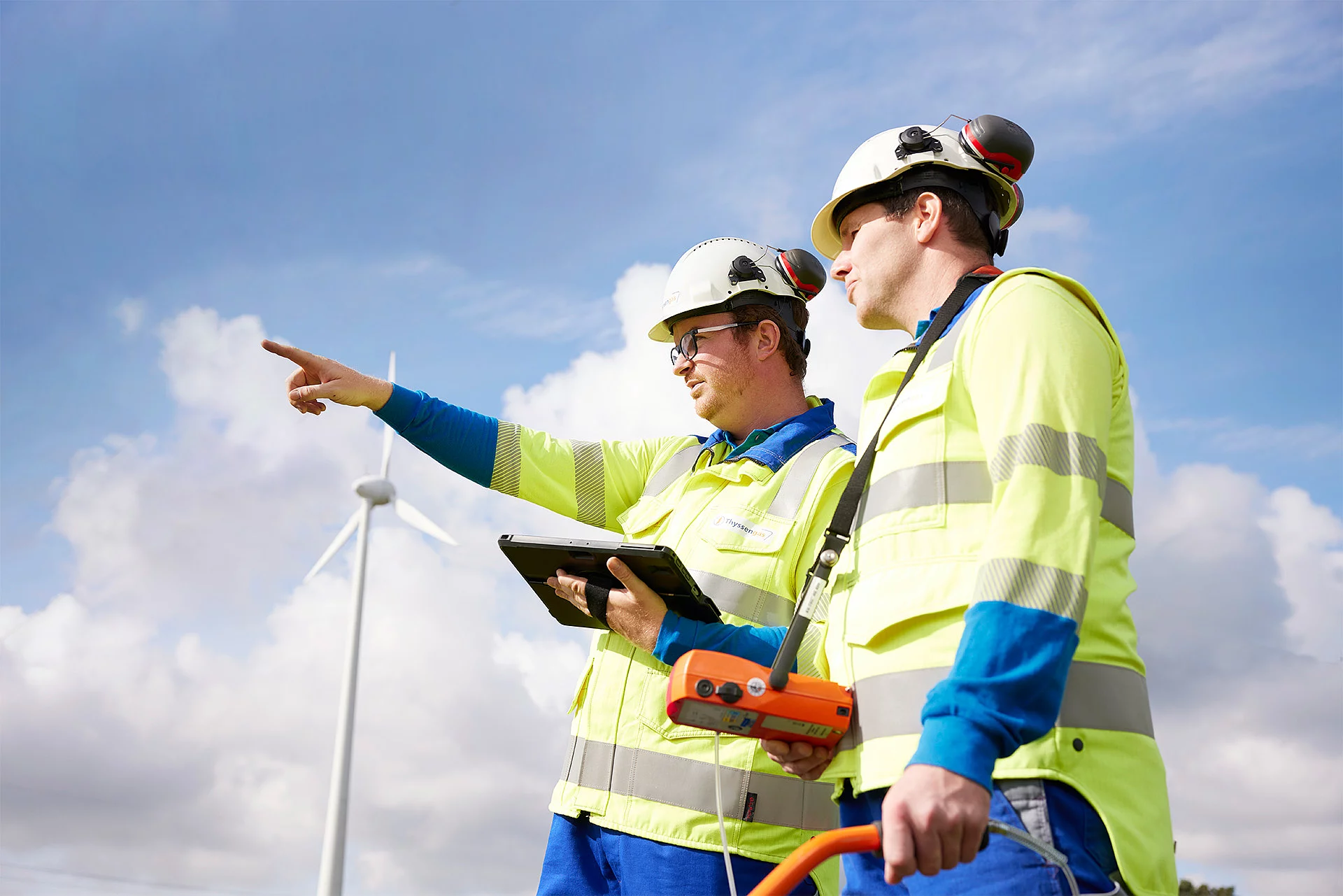
Natural gas
Natural gas is part of
of our DNA.
Thyssengas built the first long-distance gas pipeline in Germany and thus supported the industrial development of our region. And even today, natural gas is still an important energy source without which the energy transition cannot succeed. This is particularly true in view of the fact that natural gas plays an important role in ensuring security of supply in the energy market in general, but also in the electricity sector in particular. Specifically, the phase-out of coal-fired power plants (coal phase-out) means that new secured gas-fired power plant capacity of at least 10 GW must be added, which will also be H2-ready.
Natural gas therefore undoubtedly has the potential to be a bridge energy source.
The specific carbon dioxide emissions of natural gas are significantly lower than those of coal or oil. In addition, natural gas offers enormous advantages over renewable energy from wind, sun and water in terms of security of supply as a stable anchor to balance out the fluctuating generation of renewable energy. This is because electricity generated from renewable sources can only realise its advantages if it is available regardless of weather conditions. An extremely efficient storage and control element is essential for a needs-based and secure supply at all times. In addition, electricity only covers part of the energy requirement. Gas supplies the significantly larger proportion of the total primary energy requirement.
The bridge to an age of green gases.
Natural gas undoubtedly fulfils its role, but in view of the climate targets, it is time to gradually move away from fossil fuels. What exactly does this mean for Thyssengas? For us, one thing has been clear for some time: we want to change. We want to move towards a decarbonised future and actively shape it. To do this, we are using what we already have, making it better and expanding it. We are convinced that our 4,400 kilometre long pipeline network in western Germany offers ideal conditions for transporting hydrogen: It is widely branched, in close proximity to wind and solar parks, which can also produce green hydrogen in connected electrolysis plants, as well as industrial sites and ready to receive and transport green gases without major adjustments. In order to actively shape the transformation to hydrogen transport, we are constantly talking to our customers and supporting them with their ideas and projects. In the distribution network sector, the requirements for municipal heat planning give rise to very specific information needs, which Thyssengas fulfils in a needs-based and customer-oriented manner. We discuss these and other topics with our customers in our energy transition workshops and are also in constant dialogue with them individually.
We are shaping the energy transition - by not just talking about it, but by taking action.

